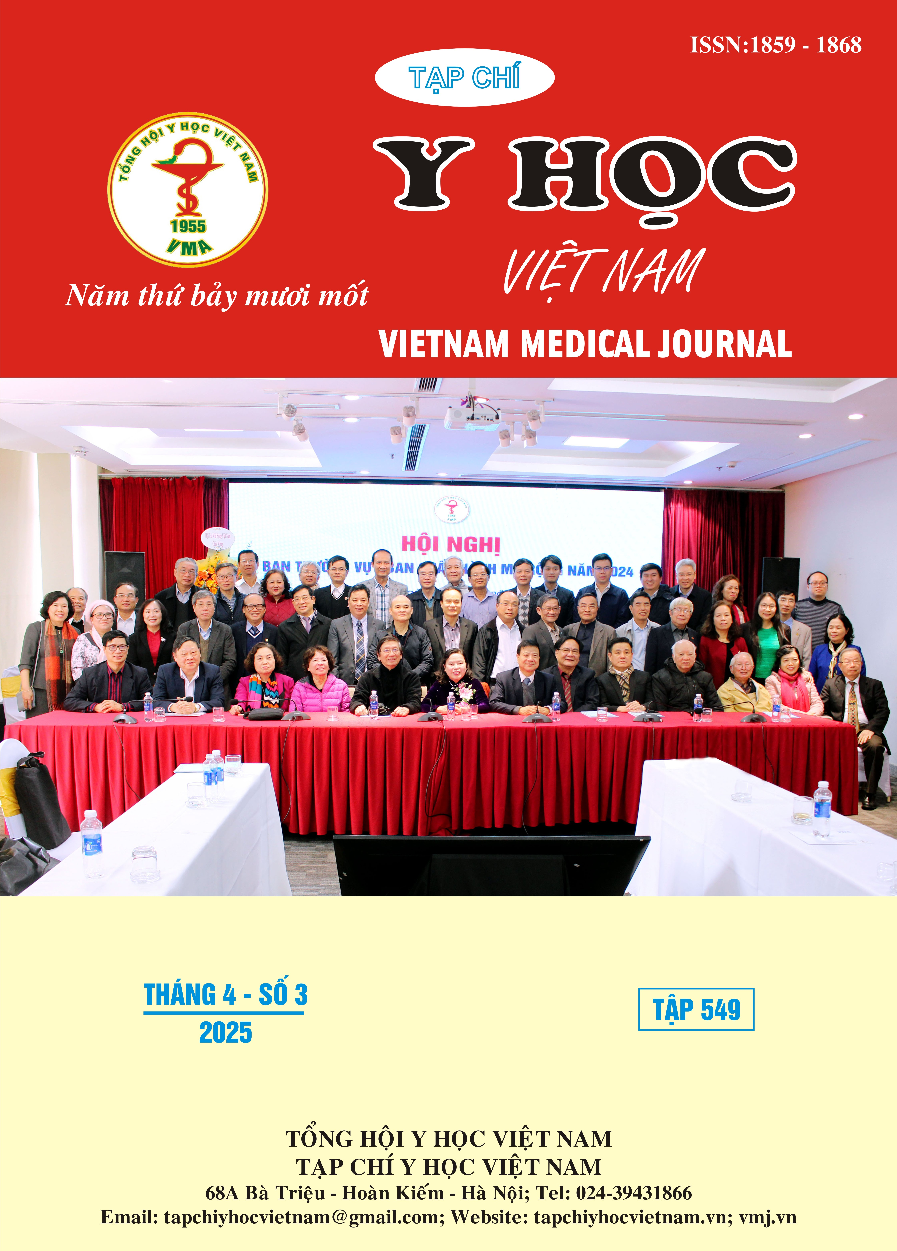CHARACTERISTICS, CAUSES AND SOME RISK FACTORS OF SEVERE INFECTIONS IN NEWBORNS AT THE PEDIATRIC CENTER, BACH MAI HOSPITAL, 2023
Main Article Content
Abstract
Objective: To explore the causes and risks factors, and to evaluate the treatment results of severely infected newborns at Pediatric center, Bach Mai Hospital. Methods: A cross-sectional study was conducted on pediatric patients under 28 days of age diagnosed with neonatal sepsis. Clinical and paraclinical symptoms of the pediatric patients were collected. Treatment methods (medication, procedural intervention) and treatment outcomes were described. Results: Serum albumin concentration can be a predictor of the severity of neonatal infection. Thrombocytopenia can be a useful factor in diagnosing and predicting the treatment outcomes of neonatal infection with negative blood culture/infection site results. The mortality rate was still high (23.4%) and is all premature infants, especially when the infant has septic shock requiring vasopressor use. The more premature the infant, the longer the duration of mechanical ventilation; the longer the duration of antibiotic use, the longer the treatment time in the ICU, and the longer the treatment time in the hospital. The rate of positive blood culture/infection site is 27%, in which the predominant is Gram (-) bacteria, especially multi-resistant Klebsiella. Conclusion: The rate of neonatal infections in premature infants was high and they had high mortality rate. There is a need for early diagnosis and effective treatment strategies for these patients.
Article Details
Keywords
Infected newborns, premature infants, hospitalization
References
2. Shane AL, Sánchez PJ, Stoll BJ. Neonatal sepsis. The Lancet. 2017;390(10104):1770-1780. doi:10.1016/S0140-6736(17)31002-4
3. Stoll BJ, Puopolo KM, Hansen NI, et al. Early-Onset Neonatal Sepsis 2015 to 2017, the Rise of Escherichia coli, and the Need for Novel Prevention Strategies. JAMA Pediatr. 2020;174(7): e200593. doi:10.1001/jamapediatrics.2020.0593
4. Một số đặc điểm dịch tễ học nhiễm khuẩn sơ sinh tại bệnh viện Nhi Trung ương. Accessed October 14, 2024. https://truyennhiemvietnam. vn/index.php/vjid/article/view/348/300
5. Nguyễn Hữu Sơn, Nguyễn Thị QUỳnh Nga ((2023) Căn nguyên và kết quả điều trị một số bệnh nhiễm khuẩn sơ sinh thường gặp tại bệnh viện Sản nhi Nghệ An năm 2022. Tạp chí Y học Việt Nam; 527(1B).
6 Giang ĐTH, Nga NTQ. Căn nguyên vi khuẩn gây nhiễm khuẩn huyết sơ sinh tại bệnh viện Nhi Trung ương. VMJ. 2023;530(1B). doi:10.51298/ vmj.v530i1B.6698
7. Hưng MT, Nhân TL, Nga NTQ, Anh TT, Luyến HT, Hương NT. Căn nguyên gây nhiễm trùng huyết ở trẻ sơ sinh non tháng tại bệnh viện Phụ sản Hà Nội và một số yếu tố liên quan. VMJ. 2024;544(2). doi:10.51298/vmj.v544i2.11863
8. Fleischmann-Struzek C, Goldfarb DM, Schlattmann P, Schlapbach LJ, Reinhart K, Kissoon N. The global burden of paediatric and neonatal sepsis: a systematic review. The Lancet Respiratory Medicine. 2018;6(3):223-230. doi:10. 1016/S2213-2600(18)30063-8
9. Stoll BJ, Hansen N, Fanaroff AA, et al. Changes in Pathogens Causing Early-Onset Sepsis in Very-Low-Birth-Weight Infants. New England Journal of Medicine. 2002;347(4):240-247. doi:10.1056/NEJMoa012657
10. Quốc Trưởng Dương, Thái Sơn Đỗ, Ngọc Ngà Dương, Thị Thu Huyền Nguyễn. Kết quả điều trị nhiễm khuẩn huyết sơ sinh tại trung tâm Nhi khoa bệnh viện Trung ương Thái Nguyên. (2024). Tạp chí Y học Việt Nam. 512(1)


